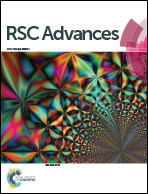Defections induced hydrogenation of silicene: a density functional theory calculation study
Abstract
Based on density functional theory calculations, the dissociative adsorption of a H2 molecule on silicene with a single atom vacancy defect (SV) or diatom vacancy defect (DV) has been investigated. The results show that the energy barrier for the dissociative adsorption of H2 molecules on silicene can be significantly depressed with these two kinds of defects studied. The dissociation energy barrier for H2 molecules is decreased from 2.23 eV on pristine silicene to 0.71 eV on silicene with single atom vacancy defects SV1(55|66), which is much smaller than the critical energy barrier of 0.91 eV, indicating that the reaction proceed at ambient temperature. The data in brackets indicate the number of silicon atoms for each member ring in the defective region. In addition, the dissociation energy barriers are 0.99 and 1.14 eV on silicene with divacancy defects DV1(5|8|5) and DV2(555|777), respectively, which are very close to the value of 0.91 eV. Therefore, we propose a promising method to tune the reaction activity of silicene and facilitate the hydrogenation of silicene, which can open the band gap of the zero band gap silicene, thus increasing the on/off ratio, which is essential for the potential applications of silicene in electronic devices.


 Please wait while we load your content...
Please wait while we load your content...